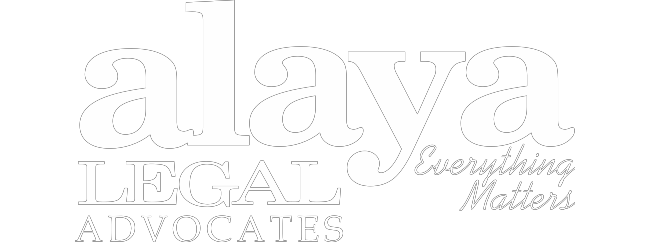| Publication Date | Version | August 18, 2023 | 1.0 |
| Keywords | Intellectual Property Rights, Competition Law, Anti-Competitive, Abuse of Dominance |
| Legislation(s) |
|
| Jurisdiction | India |
Introduction
Intellectual Property Rights (‘IPRs’) are rights in relation to ‘intellectual property’, whether contractual or under the statute. Intellectual property (‘IP’) refers to creations of the mind, such as inventions; literary and artistic works; designs; symbols, names and images used in commerce.[1]
The right to enjoy the fruits of one’s intellectual property is not in debate and is recognized under various statutes. The question is the boundary within which such a right may be exercised. There is a thin line between using IPR for one’s benefit and abusing it to curtail ‘free and fair competition’ in the market.
While ‘anti-competitive’ agreements are not permitted under the Competition Act, the said Act protects the right of a person to restrain any infringement of, or to impose reasonable conditions, as may be necessary for protecting any of his intellectual property rights conferred under specified legislations.
‘Abuse of dominance’ by a dominant enterprise or a group in relation to a relevant geographical market or a relevant product market is also not permitted under the Competition Act. However, similar protection, as available in the case of ‘anti-competitive’ agreements, is not available in the case of ‘abuse of dominance’- the issue is analyzed in this article.
Recognition of IPRs in India
IPRs are recognized under the legal regime in India, broadly under the following heads:
‘Copyright’ means the exclusive right to do or authorize certain acts in relation to work such as literary, dramatic or musical work, computer programs, cinematograph films, or sound recordings. [Section 14 of the Copyright Act]
‘Patent’ means a patent for any invention granted under the Patent Act 1970. The true and first inventor of the invention can claim it. [ Section 6 of the Patent Act]
‘Geographical indication’, in relation to goods, means an indication that identifies such goods as agricultural goods, natural goods, or manufactured goods as originating or manufactured in the territory of a country or a region or locality in that territory, where a given quality, reputation or other characteristics of such goods is essentially attributable to its geographical origin and in the case where such goods are manufactured goods one of the activities of either the production or of processing or preparation of the goods concerned takes place in such territory, region or locality, as the case may be. [Section 2(e) of the Geographical Indications of Goods (Registration and Protection) Act]
‘Trademark’ means a mark capable of being represented graphically and which is capable of distinguishing the goods or services of one person from those of others and may include the shape of goods, their packaging and combination of colours. [Section 2(zb) of Trademark Act]
‘Semi-conductor integrated circuit’ means a product having transistors and other circuitry elements which are inseparably formed on a semiconductor material or an insulating material or inside the semiconductor material and designed to perform an electronic circuitry function. [Section 2(r) of Semi-conductor Integrated Circuits Layout Design Act]
‘Design’ means only the features of shape, configuration, pattern, ornament or composition of lines or colours applied to any article, whether in two-dimensional or three-dimensional or in both forms, by any industrial process or means, whether manual, mechanical or chemical, separate or combined, which in the finished article appeal to and are judged solely by the eye; but does not include any mode or principle of construction or anything which is in substance a mere mechanical device, and does not include any trade mark as defined in clause (v) of sub-section (1) of section 2 of the Trade and Merchandise Marks Act, 1958 (43 of 1958) or property mark as defined in section 479 of the Indian Penal Code (45 of 1860) or any artistic work as defined in clause (c) of section 2 of the Copyright Act, 1957 (14 of 1957). [Section 2(d) of The Designs Act, 2000]
Scope of IPR Protection with Respect to Anti-Competitive Agreements
Section 3 of the Competition Act lists out agreements that are deemed to be ‘anti-competitive’ agreements under the Competition Act. Any agreement that causes or may cause an ‘appreciable adverse effect on competition’ is considered anti-competitive. The factors are taken into consideration by the Competition Commission of India (‘CCI’) to determine whether any agreement has an appreciable adverse effect on competition under section 3 of the Competition Act are set forth in Section 19(3) of the Competition Act as under:
- creation of barriers to new entrants in the market;
- driving existing competitors out of the market;
- foreclosure of competition by hindering entry into the market;
- accrual of benefits to consumers;
- improvements in the production or distribution of goods or provision of services;
- promotion of technical, scientific and economic development by means of production or distribution of goods or provision of services.
However, rights exercised for the protection of IPR are protected under Section 3(5) of the Competition Act, which allows IPR holders to restrain any infringement of or impose reasonable conditions necessary to protect any of the rights conferred upon them under the law in respect of their work. The CCI has discussed the scope of this exception in the following cases:
In the case of Shri Shamsher Kataria v. Ors[2], a complaint was filed against Honda, Volkswagen, and Fiat for entering into anti-competitive agreements. These car manufacturers entered into exclusive supply agreements with original equipment manufacturers, citing reasons such as ensuring quality control and protection of brand goodwill. As a result, genuine spare parts of automobiles manufactured by them were not made freely available in the open market. Many car manufacturers benefited from the IPR protection in respect of the Anti-competitive agreement under the Competition Act. The CCI laid down the scope of the protection above available under Section 3(5) of the Competition Act and laid down a twofold test –
A) whether the right which is put forward is correctly characterized as protecting intellectual property; and
B) whether the requirements of the law granting the IPRs are being satisfied.’
The IPR protection under Section 3(5)(i) of the Competition Act permits the IPR holder to ‘impose reasonable conditions, as may be necessary for the protection of any of his rights’. In this case, the keyword is ‘necessary‘, meaning the IPR holder can protect his right but only up to a specific limit. Upon an appeal being filed before the High Court of Delhi, the Order of the CCI was upheld by the Court.
In the case of FICCI Multiplex Association of India v. United Producers Distribution Forum[3], the informant alleged that four multiplexes in the country were involved in an anti-competitive agreement under Section 3 of the Competition Act. CCI held that the non-obstante clause that is ‘Nothing contained in this section shall restrict’ contained in Section 3(5) of the Competition Act is not absolute. The Competition law provisions will apply, and the IPR holder only has the right to protect his work from infringement.
It is clear from the letter of the law and interpretation thereof by competent bodies that the intent is to harmonize the legitimate interests of an IPR holder with the larger goal of encouraging competition by prohibiting ‘anti-competitive’ agreements.
A similar intent to harmonize is not found while encouraging competition by prohibiting ‘abuse of dominance’.
Abuse of Dominance Under Section 4 of the Competition Act
No enterprise or group can abuse its dominant position under Section 4(1) of the Competition Act. It shall constitute an abuse of dominant position under Section 4(2) of the Competition Act if any enterprise or group:
- imposes unfair or discriminatory conditions or prices in the purchase or sale of goods or services,
- limits or restricts the production or development of goods or services in the market,
- engages in activities leading to a denial of market access or
- misuses its dominant position in a relevant market to enter into another relevant market.
Sections 4(1) and 4(2) make it clear that being ‘dominant’ in a relevant market by itself is not prohibited, but using that position to drive away competitors from the market or restrict new players from entering the market is prohibited.
Abuse of Dominance and Protection of IPR
The Competition Law Review Committee, in its report dated July 2019, stated that a monopoly or a degree of economic exclusivity is created by IPRs by their very nature. The report also observed that even in cases where market power has been conferred, a foreclosure in the market may not always be caused due to a dominant position. Therefore, such cases may not by themselves constitute an infringement of competition law. The Competition Law Review Committee recommended that in cases of abuse of dominance, a defence allowing reasonable conditions and restrictions for protecting IPR may be provided.
The Committee also recommended that the defence under Sections 3 and 4 of the Competition Act should be comprehensive and, in addition to the existing IPR laws, should also include ‘any other law in force relating to the protection of IPR rights.’[4]
Section 4A was proposed in the draft amendment Competition Bill 2020, which incorporated protection for holders of IPR, etc., in the cases of abuse of dominance. However, the recommendation regarding Section 4A was not incorporated in the Competition Amendment Bill 2023, recently passed by the Parliament.
The availability of defence of IPR in a case of abuse of dominance has been a point of contention in other jurisdictions like the European Union. The position is now settled, as evidenced by decided cases.
In the case of IMS Health GmbH v NDC Health GmbH[5], IMS provided sales data on pharmaceutical products in Germany. Such data was organized according to a structure consisting of 1860 or 2847 ‘bricks’, each brick corresponding to a particular geographic area of Germany. Due to clients being accustomed to structures consisting of 1860 or 2847 bricks, NDC started using a brick structure very similar to IMS.
The Oberlandesgericht Frankfurt am Main (Germany) passed an interlocutory order of prohibition against NDC, holding that the brick structure used by IMS was protected by copyright. Following this, a complaint was made to the Court of Justice of the European Union, claiming that the refusal on the part of IMS to grant the license to NDC would constitute an abuse of a dominant position.
Article 82 of the EC Treaty states that such abuse may, in particular, consist in:
- directly or indirectly imposing unfair purchase or selling prices or other unfair trading conditions;
- limiting production, markets or technical development to the prejudice of customers;
- applying dissimilar conditions to equivalent transactions with other trading parties, thereby placing them at a competitive disadvantage;
- making the conclusion of contracts subject to acceptance by the other parties of supplementary obligations which, by their nature or according to commercial usage, have no connection with the subject of such contracts.
The Court examined whether or not a refusal to grant a license to use a brick structure by an undertaking in a dominant position that has an intellectual property right therein to another undertaking that also wishes to provide such data in the same Member State but which, because potential users are unfavourable to it, cannot develop an alternative brick structure for the presentation of the data that it proposes to offer, constitutes an abuse of a dominant position within the meaning of Article 82 EC.
The European Court of Justice held that the refusal to license would amount to an abuse of dominance when the following conditions are fulfilled:
- The undertaking requesting the licence intends to offer on the market new products or services that are not offered by the owner of the IPR and for which there is a potential consumer demand;
- There was no justification for such a refusal, and
- The conduct by the undertaking in the dominant position excluded all competition on the market since they denied access to essential information that was indispensable for the creation of the new product.[6]
In another case, namely, Radio Telefis Eireann (RTE) and Independent Television Publications Ltd (ITP) v Commission of the European Communities[7], Magill TV Guide Ltd (Magill) was prevented from publishing a comprehensive weekly television guide by the appellants and the BBC, which obtained injunctions prohibiting Magill from publishing such a TV guide. Maggil claimed that the appellants and the BBC were abusing their dominant position by refusing to grant licenses to publish their respective weekly listings. Magill claimed that such actions constituted an abuse under Article 86 of the European Economic Community Treaty, which prohibits improper advantage of a dominant position and deems them to be incompatible with the Common Markets.
The Court noted that mere ownership of an IPR cannot confer a dominant position, and exercising an exclusive right by the proprietor may, in exceptional circumstances, involve abusive conduct. , The following circumstances were taken into account by the Court of First Instance to decide whether or not the conduct of the IPR holder was abusive:
- Unavailability of a substitute good;
- Hindrance in the creation of a new good due to denial of information supply;
- Denial without a justified reason;
- Keeping away from competition in another market and using that market to benefit themselves.
The Court dismissed the appeal upholding the decision of the Court of First Instance, which held that “as regards the concept of abuse, the Commission clearly stated in the decision its reasons for finding that the applicant, by using its exclusive right to reproduce the listings as the instrument of a policy contrary to the objectives of Article 86, went beyond what was necessary to ensure the protection of the actual substance of its copyright and committed an abuse within the meaning of Article 86.”
Abuse of Dominance and Patents: The Indian Conundrum
In 2016, Telefonaktiebolaget LM Ericsson (PUBL) filed two Writ Petitions against the CCI, Intex and Micromax before the High Court of Delhi.[8] The Court clubbed two Writ Petitions filed by PUBL. The Writ Petitions were filed against two CCI orders which had held that ‘the Patents Act is a special act vis-à-vis the Competition Act. However, since there is no conflict between the Competition Act and the Patents Act, and in the absence of any conflict between the two legislations, the jurisdiction of CCI to entertain complaints for abuse of dominance in respect of Patent rights cannot be ousted.’ The CCI orders were issued pursuant to information filed by Micromax and Intex before the CCI, alleging abuse of dominance by PUBL as it was charging excessive royalties from them. Ericsson held several patents in telecom infrastructure equipment. Some of these patents were Standard Essential Patents (SEP). Ericsson had tried to enter into Patent Licensing Agreement with Micromax and Intex on fair, reasonable, ad non-discriminatory terms (FRAND), but the negotiation failed. Later, Ericsson accused Micromax and Intex of violating its patents and that Ericsson was entitled to royalties regarding its SEPs. Hence, the said information was filed by Micromax and Intex.
The Court upheld both the impugned orders passed by the CCI. PUBL preferred an appeal against the order of the High Court. The appeal has been discussed in the later paragraphs as the appeal had been clubbed with other matters.
In the case of Monsanto Holdings Pvt. Ltd. (Monsanto) and Ors. v. Competition Commission of India and Ors[9], Monsanto licensed his Bt. Cotton Technology to MMBL, who sublicensed it to various seed manufacturers in India on payment of specific non-refundable and recurring royalty/fees. Monsanto and MMBL were accused of abusing their dominant position in the Bt. Cotton Seeds marketplace by charging unreasonably high royalties/fees. The High Court of Delhi concluded that ‘these provisions of the Competition Act clearly indicate that the intention of the Parliament was not to repeal any other statute by enacting the Competition Act, but on the contrary, the legislative intent was to ensure that the provisions of the Competition Act are implemented in addition to the provisions of other statutes. After elaborately discussing the various provisions of both the enactments (Patents Act and the Competition Act), this Court concluded that there was no irreconcilable repugnancy or conflict between the Competition Act and the Patents Act and, therefore, the jurisdiction of the CCI to entertain complaints regarding abuse of dominance in respect to patent rights could not be excluded.’
In the case of Telefonaktiebolaget LM Ericsson (PUBL) v. Competition Commission of India and Ors and Monsanto Holdings Pvt. Ltd. and Ors. v. Competition Commission of India and Ors four appeals and a writ petition were filed before the High Court of Delhi in 2023[10]. The common question before the Court was that when a patent is issued in India, and the patentee asserts such rights, can the CCI inquire into such patentee’s actions in exercising its powers under the Competition Act, 2002? On this issue, the Court held that ‘the subject matter that is in focus is not merely anti-competitive agreements and abuse of dominant position, which both the Patents Act (in Chapter XVI) and the Competition Act (in Sections 3 and 4) deal with. The relevant subject matter for this assessment is anti-competitive agreements and abuse of dominant position by a patentee in exercising their rights under the Patents Act. There is no scope of doubt that the Patents Act is the special statute and not the Competition Act; therefore, the Patents Act must prevail over the Competition Act on the issue of the exercise of rights by a patentee under the Patents Act.’
Viewpoint
By Section 3(5) of the Competition Act, an agreement would not be considered as ‘anti-competitive’ even if it satisfies the tests laid down under Section 3 (1), (3) or (4) of the Competition Act if such agreement is to restrain any infringement of, or to impose reasonable conditions, as may be necessary for protecting any of his rights which may have been conferred under any applicable law.
Arguably, but for Section 3(5), the IPR holder could have entered into an agreement and imposed unreasonable conditions to protect its IPR conferred under applicable law and run the risk of the agreement being ‘anti-competitive’.
It is noteworthy that the ‘conditions’ allowed to be imposed under said Section 3(5) should be ‘reasonable’ and ‘necessary’ for protecting IPR conferred under law.
The question is if a similar allowance should be afforded to determine ‘abuse of dominance’. In an ideal scenario, the answer would be in the affirmative.
In this context, it will be relevant to take note of Section 83 of the Patent Act of 1970. This Section lists the following principle in respect of ‘abuse of patent right’:
“that the patent right is not abused by the patentee or person deriving title or interest on patent from the patentee, and the patentee or a person deriving title or interest on patent from the patentee does not resort to practices which unreasonably restrain trade or adversely affect the international transfer of technology;.”
The above provision is a restriction on the exercise of patent rights by any patent right holder – irrespective of the status of such patent right holder.
Arguably, suppose a dominant enterprise is allowed to impose ‘conditions’ (even if qualified by the requirement of being ‘reasonable’ and ‘necessary’) even if such conditions constitute an ‘abuse’ of its position in order to protect its IPR conferred under applicable law. In that case, the chances are that, to some extent, such an enterprise would be allowed to abuse its ‘dominant’ position. The ‘social welfare’ fabric of India’s economy may not yet be ready for the market forces to address the economic inequities. However, as the nation continues to evolve and innovate, there is growing momentum towards finding a harmonious blend between social welfare and market dynamics, raising prospects for a more equitable economic future.
[2] Shamsher Kataria vs. Honda Siel Cars India Ltd., MANU/CO/0066/2014



























